Probably the most anticipated options of Wi-Fi 6 wi-fi routers is improved throughput over their Wi-Fi 5 predecessors, and we wished to examine whether or not they ship.
4 distributors – Excessive, Cisco, EnGenius and Meraki (owned by Cisco) – supplied entry factors (AP) for our check. For the reason that routers help each Wi-Fi 5 (802.11ac) and Wi-Fi 6 (802.11ax), we examined them in opposition to two Wi-Fi 5 and two Wi-Fi 6 shoppers and recorded the typical throughput and the height throughput throughout one-minute checks.
The outcomes give a way of the efficiency enhance you would possibly count on by upgrading to Wi-Fi 6, and the Wi-Fi 5 quantity is necessary as a result of some Wi-Fi 5 shoppers are more likely to be in use for some time after upgrading to Wi-Fi 6 APs.
Once you learn on previous the outcomes, we have in-depth evaluations and a comparability of necessary options of every of the APs – the Excessive (Aerohive) AP-650, Cisco Catalyst C9115, EnGenius EWS377 and Meraki MR55.
How we examined
We used network-performance software program platform IxChariot (from Ixia, a Keysight Applied sciences enterprise) to run throughput checks on the APs with 4 completely different wi-fi shoppers: Two Wi-Fi 5 – TP-Hyperlink AC600 USB Adapter and Galaxy S5 Telephone – and two Wi-Fi 6 – Ubit AX200 PCI Adapter and Apple iPhone 11.
The IxChariot High_Performance_Throughput.scr script was put in on a check PC, on the telephones and on the PCI/USB adapters. We concurrently examined the TCP uplink (from the wi-fi consumer by means of the check AP to the check PC) and the TCP downlink (from the check PC by means of the check AP to the wi-fi consumer).
Every AP was examined in opposition to every consumer, and the Ixia software program recorded the outcomes.
Throughout the testing, the space between the APs and wi-fi check shoppers was about 20 toes with a hole wood door blocking the road of sight. We enabled WPA2/AES safety on the APs and set the 5Ghz channel-width to 80MHz and TX energy to 17dBm. The APs had been powered with a Gigabit 802.3at PoE injector and linked to the check PC with a Gigabit Ethernet connection.
Take a look at outcomes
We tallied the outcomes from the checks and organized them within the chart beneath:
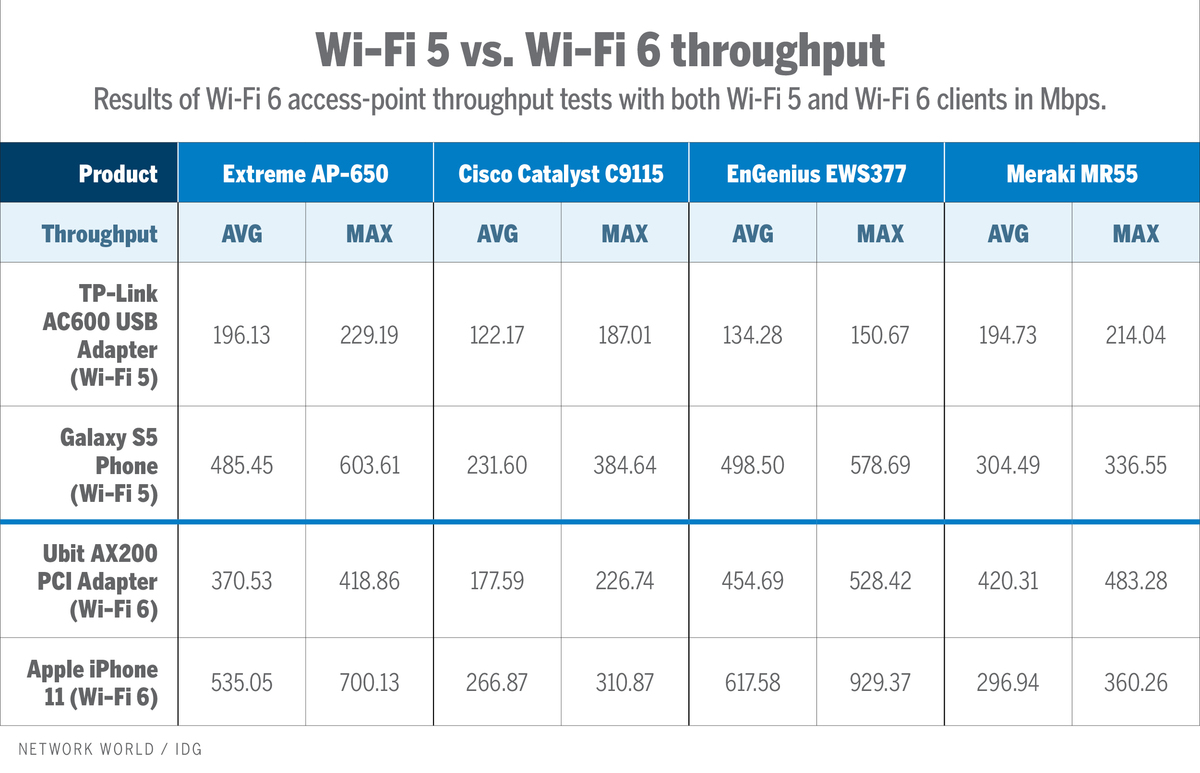 IDG
IDGThe typical throughput end result throughout Wi-Fi 6 shoppers, when averaged, was 44.85% greater than with Wi-Fi 5 shoppers, and the utmost throughput, on common, was 47.44% greater. So it appears that evidently Wi-Fi 6 entry factors do ship considerably higher throughput.
And the winners are…
Inside this check, the EnGenius EWS377 had each the quickest common throughput and the quickest most throughput numbers with each Wi-Fi 6 shoppers, so it’s the clear winner in that class.
As for efficiency with Wi-Fi5 shoppers, the Excessive AP had the most effective throughput in three of the 4 classes: common and most throughput with the TP-Hyperlink USB adapter and most throughput with the Galaxy S5 cellphone consumer, so it’s the winner for Wi-Fi 5 throughput. The EnGenius AP outperformed it in a single class – common throughput with the Galaxy S5 consumer – with a throughput of 498.5Mbps vs Excessive’s 485.45Mbps.
With the Wi-Fi 5 shoppers the bottom recorded common throughput was 122.17Mbps when the Cisco router was paired with the TP-Hyperlink adapter consumer. The best end in that class was 498.5Mbps between the Engenius AP and the Galaxy cellphone.
With the Wi-Fi 6 shoppers, the bottom most throughput was 226.74Mbps between the Cisco AP and the Ubit PCI adapter, and the very best was 929.37Mbps between the Engenius AP and the iPhone 11 consumer.
The most important outlier within the check was the Cisco AP. Its finest rating in any check was its common throughput with the Galaxy S5 Wi-Fi 5 consumer, not with one of many Wi-Fi 6 shoppers as may be hoped for.
Cisco advised testing upstream and downstream throughput individually, however we felt doing each on the identical time pressured the APs extra and represented extra of a real-world load. Cisco additionally advised working the checks once more with a more moderen model of firmware, however that might have required doing the identical for all the opposite APs, and time didn’t enable. That raises an necessary level: These outcomes for all of the entry factors are snapshots, not solely of the accessible firmware, but in addition the very particular testing circumstances. With completely different circumstances, any of the entry factors may do higher or they might do worse.
Function comparability
Throughput was the one check we ran on the 4 entry factors, so whereas we had them we additionally checked out every one to notice its key options and gauge how straightforward it’s to configure. Once more, this can be a snapshot, and distributors improve their gadgets over time.
Among the options we appeared for embody orthogonal frequency-division a number of entry (OFDMA) that enormously will increase the variety of radio-frequency subchannels an AP and so can cut back rivalry amongst a number of gadgets by transmitting concurrently to them or dedicating subchannels to every.
We additionally appeared for multiuser a number of enter a number of output (MU-MIMO), expertise that allows a number of gadgets to entry a Wi-Fi router on the identical time, successfully sharing the accessible capability. Choices for routers embody 4×4 MU-MIMO and 8×8 MU-MIMO, the place the numbers point out what number of simultaneous streams the router can help.
Wi-Fi Protected Entry (WPA3) is one other characteristic on the record, the primary main Wi-Fi safety improve in 15 years, which boosts cryptographic energy for networks transmitting delicate knowledge.
We additionally appeared for Simultaneous Authentication of Equals (SAE), which supplies higher safety of transmissions even when passwords aren’t as much as really useful safety requirements.
On the backside of this text is a chart that compares all of the APs in opposition to all 14 standards, however right here’s a chart that highlights a number of the execs and cons of every system:
 IDG
IDGThe professionals and cons of the 4 Wi-Fi 6 entry level we reviewed: Excessive AP-650, Cisco Catalyst 9115, EnGenius EWS377 and Meraki MR55.
Professionals and cons overview
Now, evaluations of the 4 APs.
Excessive (Aerohive) AP650
The AP650 is one in every of many Wi-Fi 6 APs Excessive has out, and we evaluated it utilizing their cloud-based administration platform. Packed inside are two Wi-Fi radios (one 5GHz-only and one dual-band that helps 5GHz and a pair of.4GHz as properly) and a Bluetooth radio. This is likely one of the two APs that makes use of WPA3 safety. Although we examined with the interior antenna model, they do supply a model of this identical mannequin with exterior antennas.
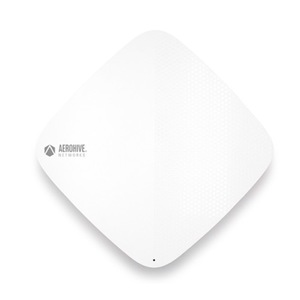 Aerohive
Aerohive Aerohive AP650
The AP650 weighs simply over 2.5 kilos, measures about 9 inches sq. and 1.5 inches excessive. On the entrance/high floor it has one LED standing mild. On one facet it has a reset button, USB port IoT and proximity/location-oriented providers, and an RJ45 console port for command-line-interface entry. Proper across the nook from that it has the DC energy enter, 2.5G Ethernet LAN port, and another 1G Ethernet LAN port. Each LAN ports are 802.3at PoE suitable, and in addition 802.3af PoE with lowered operation. The AP comes with easy mounting {hardware}.
Utilizing Excessive Networks’ ExtremeCloud IQ automation software program, you may create completely different community insurance policies for every location. (Excessive purchased Aerohive in August 2019.) On the highest of the GUI is the principle menu. The primary shortcut takes you to the onboarding course of.
On the Handle tab of the menu you may see lists and stats of gadgets, shoppers, and customers. You too can view logs for occasions, alarms, safety, and functions. There’s additionally troubleshooting instruments to assist clear up consumer or AP points.
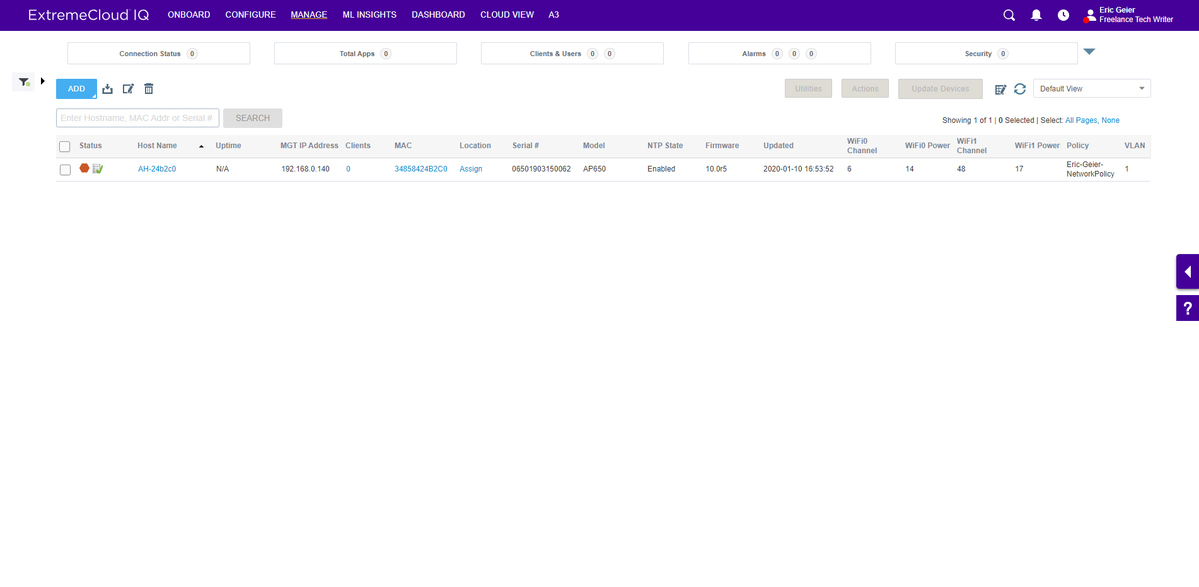 Community World
Community WorldThe Units web page of the Handle menu offers you a desk of the fundamental stats, which is customizable with the info you need to see.
The Configure tab on the menu lets you configure community insurance policies such because the SSIDs and wi-fi safety. You may configure the functions, like HTTP/HTTPS, TCP, and UDP connections, that you simply need to monitor utilization for. You may entry the settings for frequent objects, as an example insurance policies, VLANs, safety, QoS, and authentication.
From the Configure tab you may as well handle customers and teams for normal RADIUS 802.1X authentication or for Excessive’s distinctive Personal Pre-shared Key (PPSK) performance. With PPSK sure customers may be given their very own WPA/WPA2 password to make use of on the Wi-Fi.
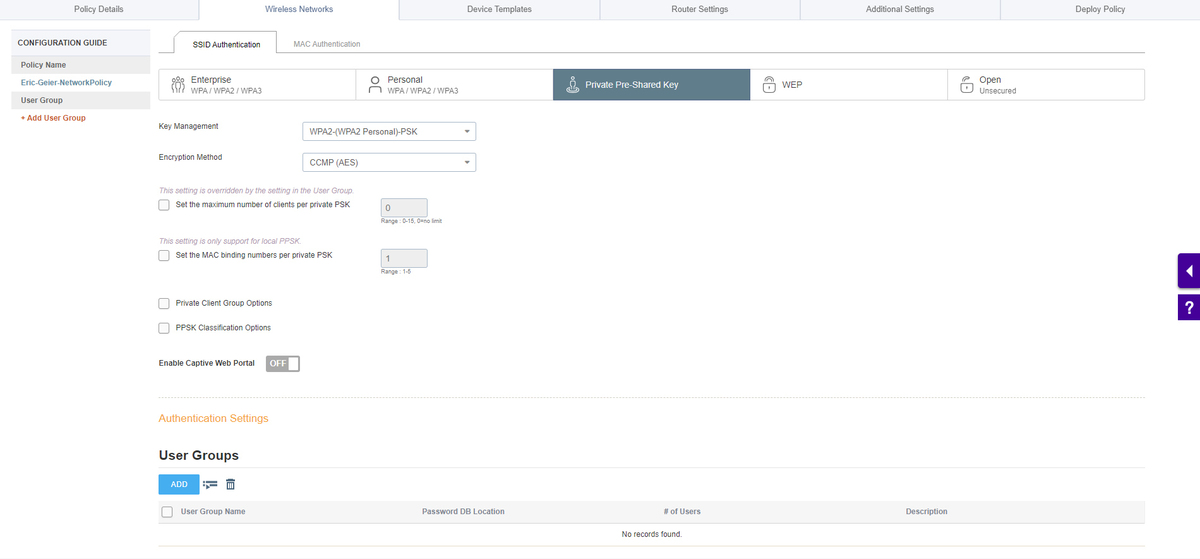 Community World
Community WorldExcessive’s PPSK characteristic is beneficial for giving guests and non-employees encrypted Wi-Fi entry with out having at hand them your primary Wi-Fi credentials.
Inside the ML Insights tab on the menu you’ll discover a neat characteristic they name Community 360. It lets you import ground plans to create a community topology map for documentation and monitoring, plus you may place simulated APs to see a visible prediction of the Wi-Fi protection. A part of the ML Insights can be Consumer 360 to present you an thought of consumer efficiency.
Comparative Analytics can be a easy however neat characteristic the place you may see how your bandwidth, variety of distinctive consumer gadgets, and common variety of shoppers with poor well being examine to different Excessive Wi-Fi networks inside your business sort.
On the Dashboard tab of the menu you may see extra stats about community well being, and you may generate customizable reviews. On the Cloud View tab, you may see but extra stats, however these are about visitors, shoppers, occasions, and utilization throughout the globe for all Excessive networks. This doesn’t have any actual worth however is neat to see. The final tab on the menu is A3, which is Excessive’s cloud-based Community Entry Management (NAC) service, which requires separate licensing.
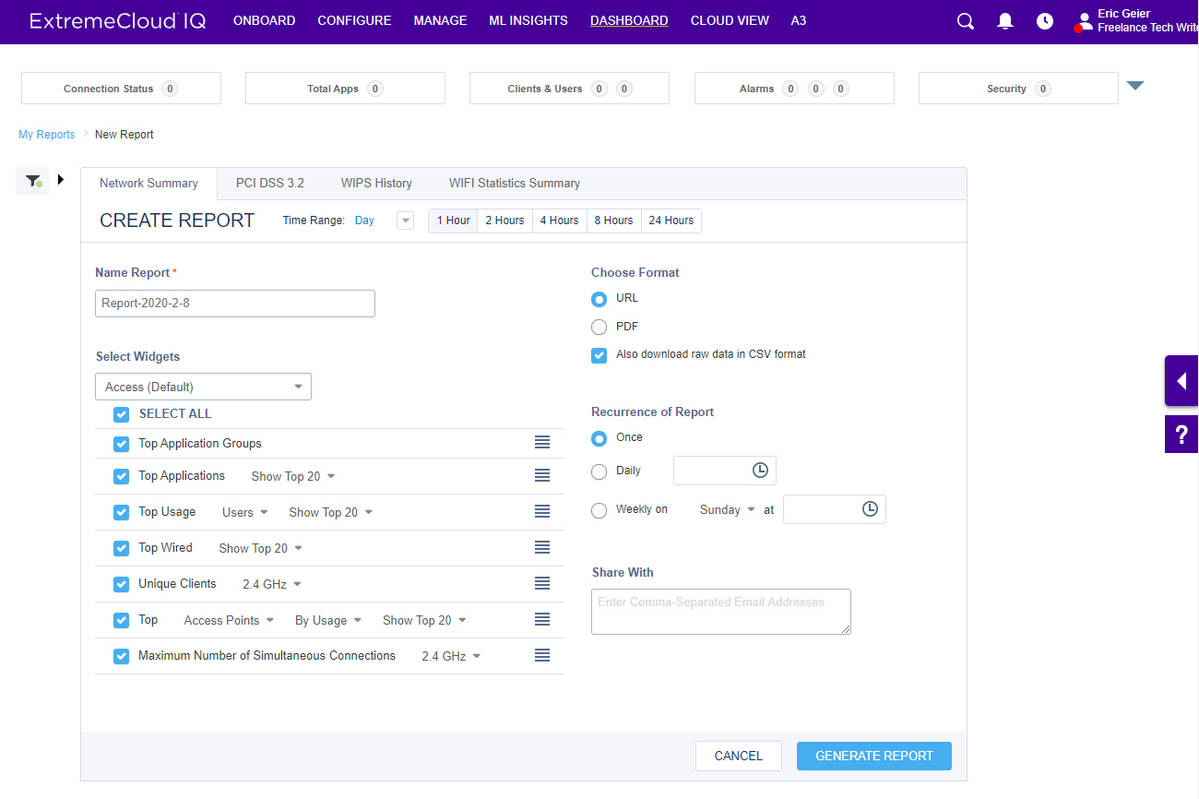 Community World
Community WorldExcessive presents nice reporting performance for community, PCI, WIPS, and wi-fi stats.
All through Excessive’s cloud GUI there’s a assist shortcut on the proper facet of every web page that opens their documentation to the actual matter on the display at the moment. There are even some spots all through the GUI with video icons that open up a video rationalization.
Whereas configuring our check AP, we discovered the method and GUI to be a bit sophisticated, particularly for smaller networks. There are a variety of template and profile schemes to assist clients with giant numbers of APs, nevertheless it nonetheless looks as if configuration could possibly be simplified. One annoyance is that a lot of the default templates and profiles couldn’t be edited. We needed to clone them, edit the cloned templates/profiles, after which discover out the place to use them.
Cisco Catalyst 9115
Here’s a take a look at Cisco’s Catalyst C9115AXI-B AP with the C9800-40-K9 wi-fi controller. Housed contained in the AP are two Wi-Fi radios (2.4GHz-only and 5GHz-only) and a Bluetooth radio. It’s one in every of 4 Wi-Fi 6 AP fashions within the firm’s portfolio, and we evaluated the model with inner antennas.
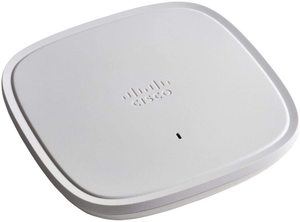 Cisco
Cisco Cisco Catalyst 9115
This Cisco AP weighs about two kilos and measures about 8-inch sq. and 1.5 inches excessive. On the highest of the AP you’ll discover an LED standing mild and a USB port, which will likely be enabled by way of future software program. On backside you’ll discover the 1G/2.5G LAN port, an RG-45 console port, and a reset button. The LAN port helps 802.3at and 802.3af PoE, however reduces performance with the latter possibility. The AP comes with commonplace mounting {hardware} as properly.
On the left-hand facet of the online GUI of the controller is the principle menu. The primary web page is the Dashboard, the place you may see the principle stats and utilization of the WLANs, APs, shoppers, and rogues and interferers. You additionally get particulars on the controller utilization and specs.
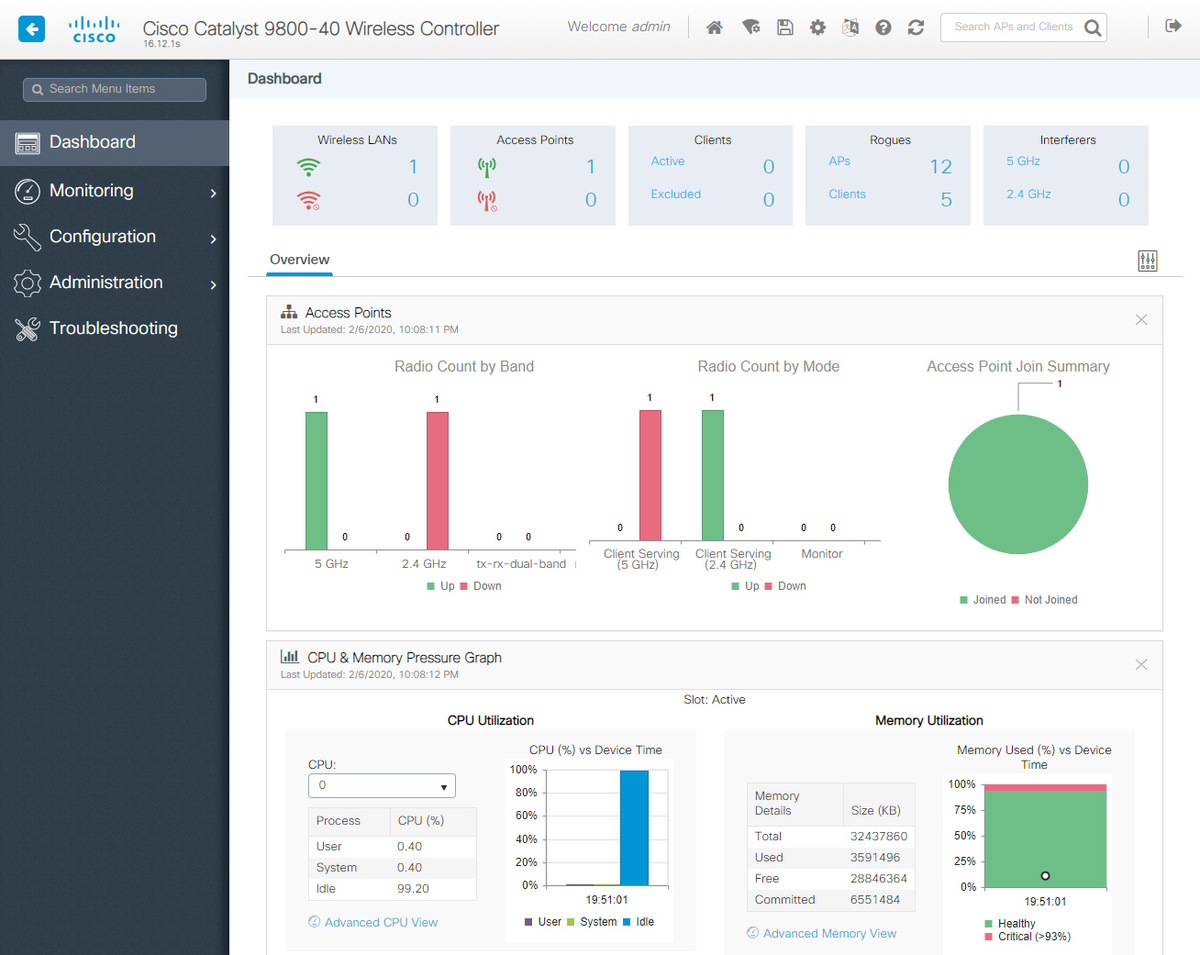 Community World
Community WorldThe Dashboard offers you some overview graphics and graphs of the principle utilization and stats of the APs.
Community World
Within the Monitoring class you may view particulars and stats on every little thing, similar to ports, system, AAA, providers, and lots of wi-fi statistics. Within the Configuration class you may configure the interfaces, layer2 settings, routing protocols, and providers.
Within the Radio Configurations tab you may setup interference detection known as CleanAir and their radio useful resource administration for detecting and adapting to noise and protection points. You too can configure knowledge charges for top throughput, configure parameters for media/voice wi-fi visitors, and basic community settings.
Within the Safety Configuration class you may configure the interior and exterior AAA servers, handle the ACL lists, handle visitor customers, and configure net authentication. Rogue AP detection and containment performance can be configurable within the safety class. Additionality, you may combine the controller with Umbrella, Cisco’s enterprise community safety platform.
Companies Configuration manages utility visibility, units QoS, throttles bandwidth, connects Cisco cloud providers, units up mDNS, and configures multicast settings. Wi-fi Configuration class contains AP-specific settings, configuring air-time equity, and handle mesh performance.
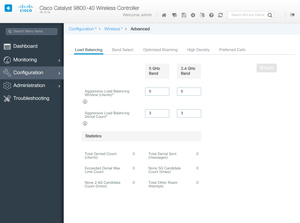 Community World
Community WorldThe Superior Wi-fi options assist you to fine-tune the load balancing, band-steering, roaming, and density performance.
Administration offers entry to finest practices, to the CLI from the online GUI, and to configuration of the principle system settings, DHCP swimming pools, and DNS. It additionally supplies the interface for performing backups/restores and accessing the file supervisor.
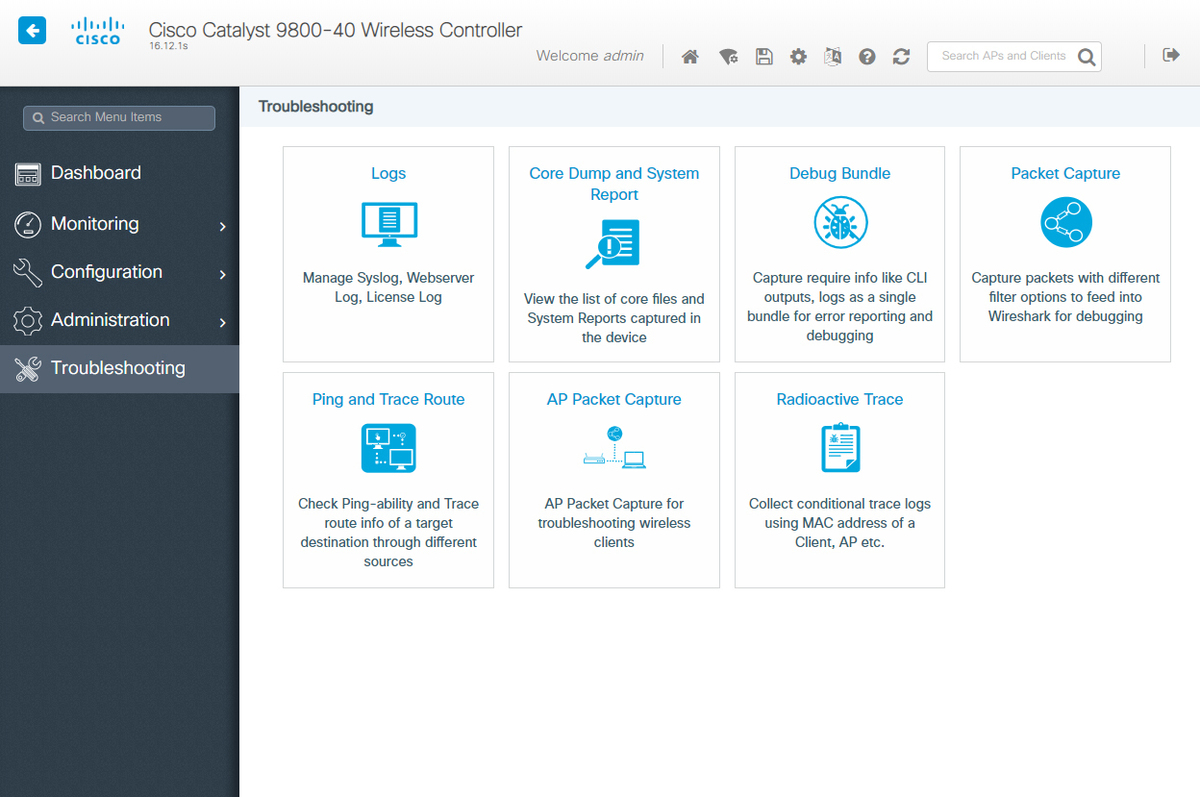 Community World
Community WorldThe Troubleshooting web page is the place you may entry the logs, dumps, and reviews plus instruments like packet capturing and ping and hint route.
Leave a Reply